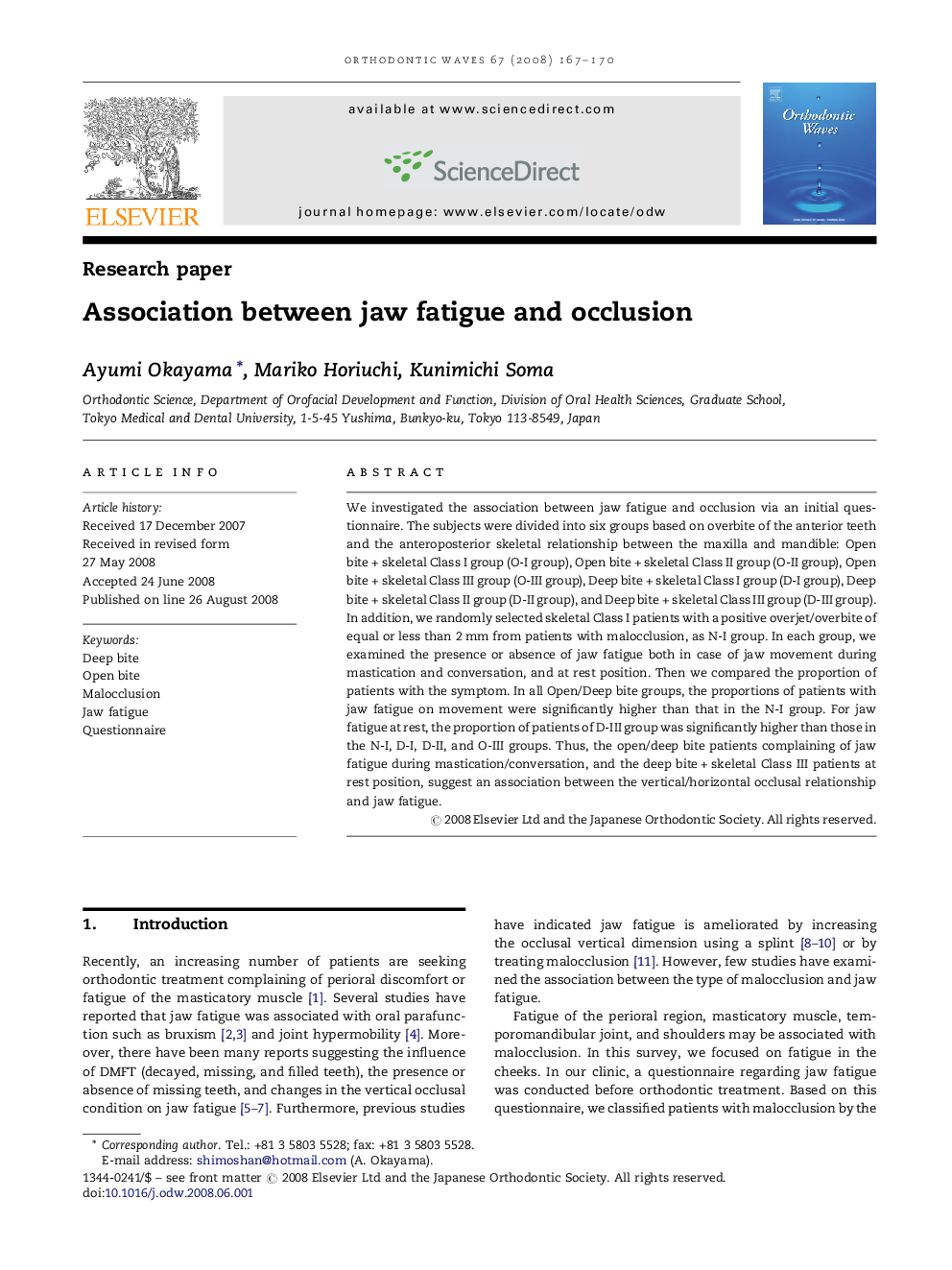| Article ID | Journal | Published Year | Pages | File Type |
|---|---|---|---|---|
| 3170650 | Orthodontic Waves | 2008 | 4 Pages |
We investigated the association between jaw fatigue and occlusion via an initial questionnaire. The subjects were divided into six groups based on overbite of the anterior teeth and the anteroposterior skeletal relationship between the maxilla and mandible: Open bite + skeletal Class I group (O-I group), Open bite + skeletal Class II group (O-II group), Open bite + skeletal Class III group (O-III group), Deep bite + skeletal Class I group (D-I group), Deep bite + skeletal Class II group (D-II group), and Deep bite + skeletal Class III group (D-III group). In addition, we randomly selected skeletal Class I patients with a positive overjet/overbite of equal or less than 2 mm from patients with malocclusion, as N-I group. In each group, we examined the presence or absence of jaw fatigue both in case of jaw movement during mastication and conversation, and at rest position. Then we compared the proportion of patients with the symptom. In all Open/Deep bite groups, the proportions of patients with jaw fatigue on movement were significantly higher than that in the N-I group. For jaw fatigue at rest, the proportion of patients of D-III group was significantly higher than those in the N-I, D-I, D-II, and O-III groups. Thus, the open/deep bite patients complaining of jaw fatigue during mastication/conversation, and the deep bite + skeletal Class III patients at rest position, suggest an association between the vertical/horizontal occlusal relationship and jaw fatigue.
